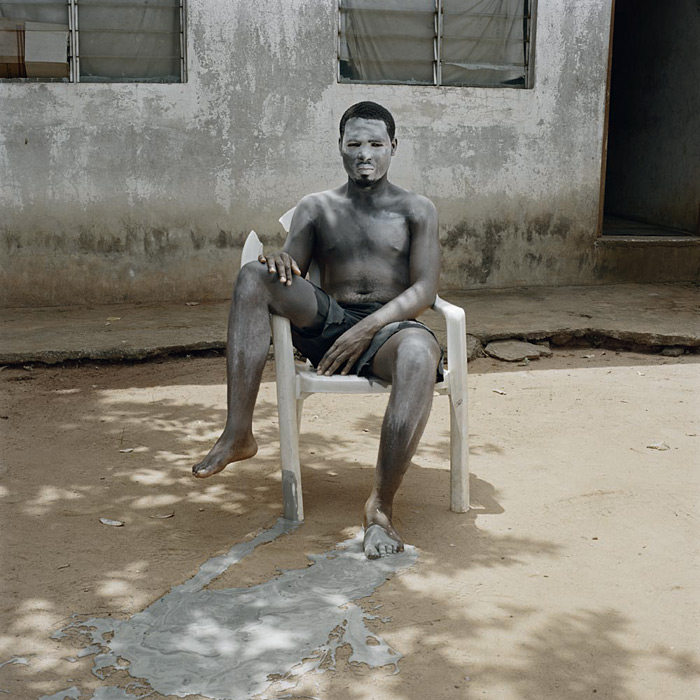Photographers
PIETER HUGO
Text: Daniel Leers
Images courtesy of Stevenson Gallery, Capetown/Johannesburg and Yossi Milo, New York
Pieter Hugo (South African, b. 1976) came of age in a country divided by race. Under apartheid in South Africa, whites were considered full citizens while blacks were segregated, marginalized, and mistreated. Following the official fall of apartheid in 1994, conditions improved for blacks, but gross injustices persisted. Hugo, calling himself a “political-with-a-small-‘p’ photographer,” was not willing to turn a blind eye to this situation and began concentrating on subjects that society preferred to ignore. His commitment to photographing the underrepresented carried him from his native Cape Town to other places on the African continent where similar conditions, often the result of colonialism, existed. Over time, Hugo’s practice has expanded to include more conceptual themes, but he has remained true to his artistic roots. His striking pictures force viewers to take note of people, places, and moments that might otherwise be forgotten.
The Hyena and Other Men
In his earliest series Looking Aside (2003-2006), Vestiges of a Genocide (2004), and The Bereaved (2005), Hugo addresses difficult subject matter head-on. The photographs draw attention to people who have suffered because of their physical differences, or fallen victim to mass genocide or the AIDS epidemic. Hugo raises similar issues with a subsequent project, Permanent Error (2009-2010), which features Ghanaians who subsist on a garbage dump outside Accra. They look directly into the camera, asserting their humanity while questioning viewers’ habits of consumption. All of these photographs are unsettling, in part because of Hugo’s skill at portraying the harshest realities of life on his home continent.
Permanent Error
With subsequent bodies of work, Hugo shifts his attention to the more dramatic and performative possibilities of photography. The Hyena and Other Men (2005-07) and Nollywood (2008-09), both shot in Nigeria, focus on individuals who entertain for a living. Some of them do so by parading exotic animals through towns, often hoping to get paid simply to leave. Others use hammed-up acting in melodramatic plot lines peppered with violence to feed the demand of the world’s third largest film market. Most people unfamiliar with this culturally rich West African nation would tend to write off these individuals as offering little more than cheap thrills. But Hugo lingers with his camera, exposing the deeper identities of his subjects and urging viewers to look past surface appearances.
Nollywood
Most recently, Hugo has turned his lens on himself and his surroundings. With There’s a Place in Hell for Me and My Friends (2011) and Kin (2008-2011), Hugo has started to explore his personal relationships with friends and family as well as his relationship to specific places in South Africa. The inspiration for these series draws on elements of his past work. In exploring the depth and complexity of the daily lives of his subjects, Hugo’s art combats the lamentable cycle that leads from forgetting those we encounter to regretting that we did not pay more attention in the first place.






























































































































